The restaurant industry isn’t in its prime right now. We’re still reeling from a global pandemic that was immediately followed by The Great Resignation and a cost of living and energy crisis.
The challenges faced by restaurant managers and owners are immense and multi-faceted, but they can be reckoned with.
In this article, we’ll talk about five big restaurant management challenges and propose solutions that will help you deal with them.
Let’s start with a problem that has been especially acute these days: staffing.
Retaining Quality Restaurant Staff
The restaurant industry is notorious for its low wages and difficult working conditions. Therefore, it’s no surprise that finding and keeping good staff is one of its biggest challenges.
One study of 3,700 restaurant workers revealed that a third of workers don’t plan on keeping their job for very long.
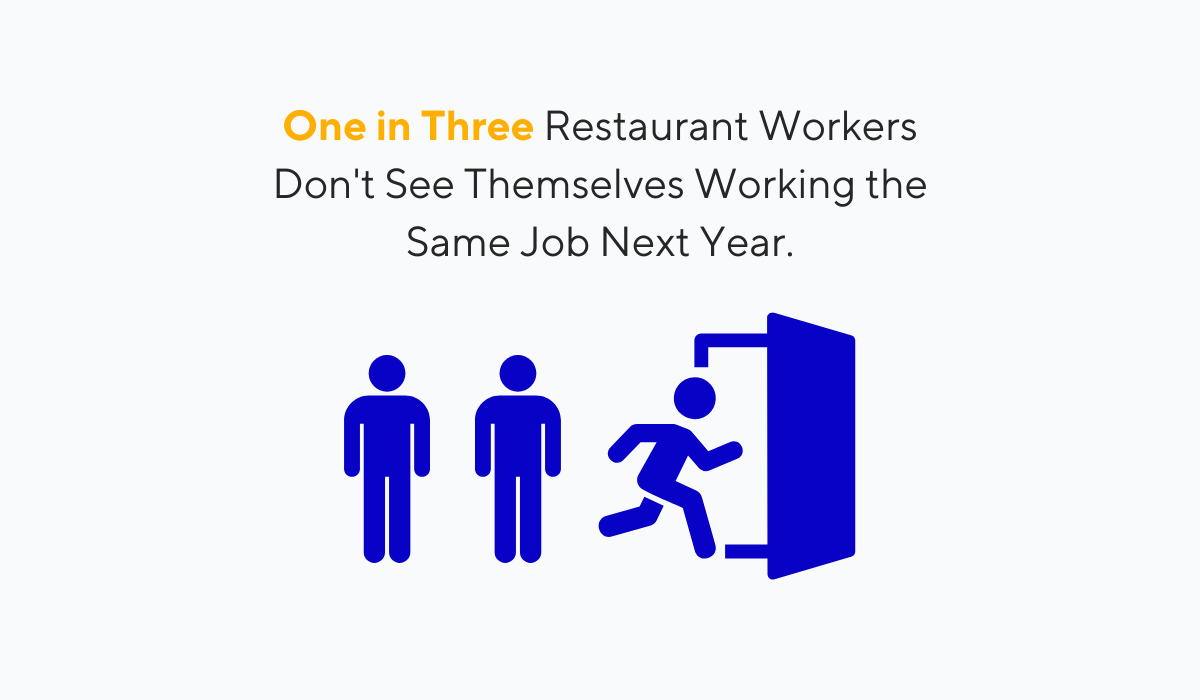
Illustration: Tablein / Data: 7Shifts
Exploring the causes of this phenomenon of high turnover, the same study found that several contributing factors are at play.
In order of importance, these are:
- Low wages
- Insufficient flexibility in scheduling
- Lack of manager recognition
None of this should surprise you, as these problems have haunted the industry for years.
For example, in the US, 45.8% of workers still earn below $15, which is less than half of the national average.
Obviously, the solution here is to provide higher salaries and implement better people management techniques.
But how can restaurants even hope to make changes with the industry still reeling from the impact of a global pandemic, The Great Resignation—and all that in the midst of an energy crisis?
Owners have their own methods.
For example, John Banquil, CEO of Ling & Louie's Asian Bar and Grill, made improvements by focusing on three areas:
We’ve had to take incremental menu price increases, worked with food and beverage distributors to secure better contract pricing, and adjusted our scheduling to be more efficient.
Decisions like this can be hard on a business, but they should be preferable to losing workers.
As for managerial recognition, this, at least, is one thing you can accomplish without exposing your business to financial risk.
It simply requires more time spent on monitoring employee efforts, and communicating feedback and praise regularly.
For example, a good practice to adopt is holding pre-shift meetings to discuss current restaurant affairs, comment on everybody’s performance, and single out outstanding employees for a pat on the back.
You can use a simple meeting agenda template to endow this task with structure and efficiency.
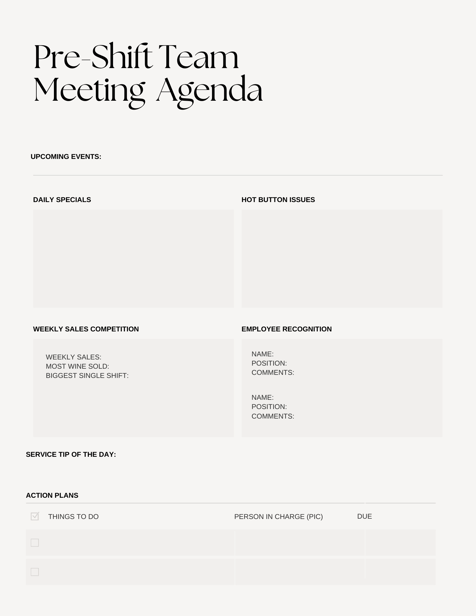
Source: Tablein
Staffing is a major issue for restaurants right now, but solutions do exist.
Take a look at your pricing and your supplier deals to see if you can find a way to increase wages and take better care of your employees to mitigate this issue.
Keeping the Profit Margins
Operating a restaurant at a profit is increasingly challenging in this economic climate.
In fact, restaurant profit margins have been shrinking for a while now and stand between 3% (full-service restaurants) and 9% (quick-service restaurants).
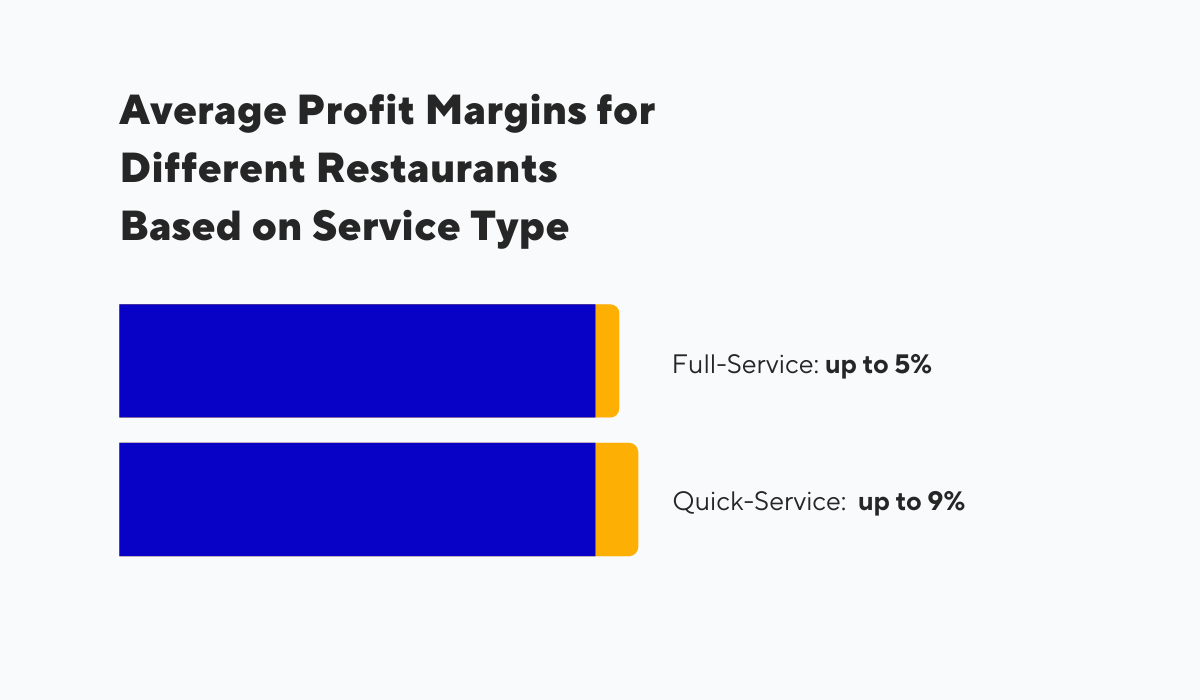
Illustration: Tablein / Data: Seven Rooms
Full-service is at the lower end here because these restaurants tend to have higher overhead and labor costs.
We already talked about how price hiking and deal renegotiations can help you find more money in your business, but is there anything else you can do to keep the restaurant afloat?
Well, one way is to increase your table turn rate and serve more customers during your working hours. That way, you can get more money out of every evening and therefore more profits.
One tool that could help you do this is an online table reservation system.
This kind of software leaves the whole process of booking a table in the hands of the guest, who just needs to hop onto your website and pick out the date, time, party size, and dining area that suits them.
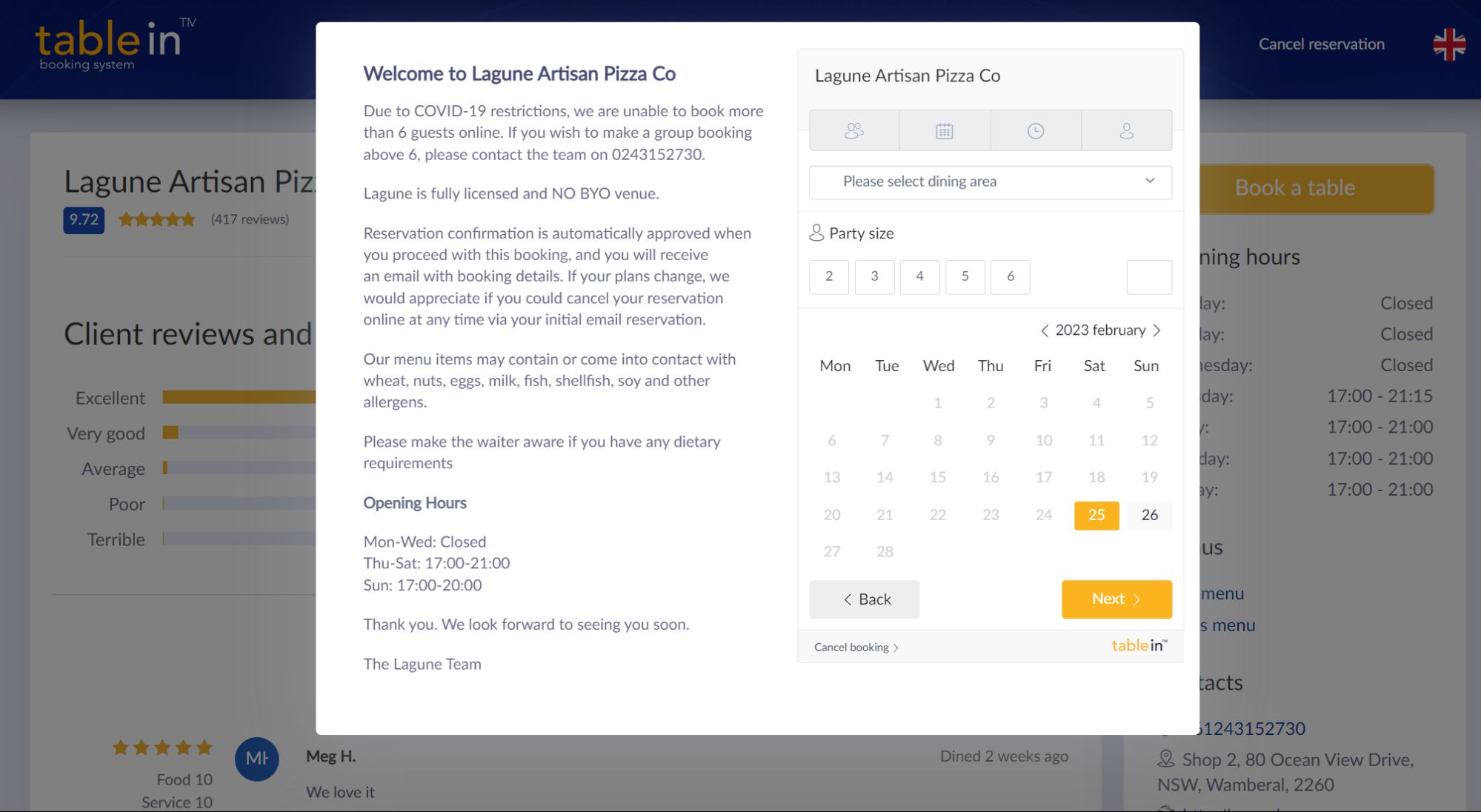
Source: Tablein
The reservation is then automatically recorded and displayed on your end so you can have a clear overview of the evening.
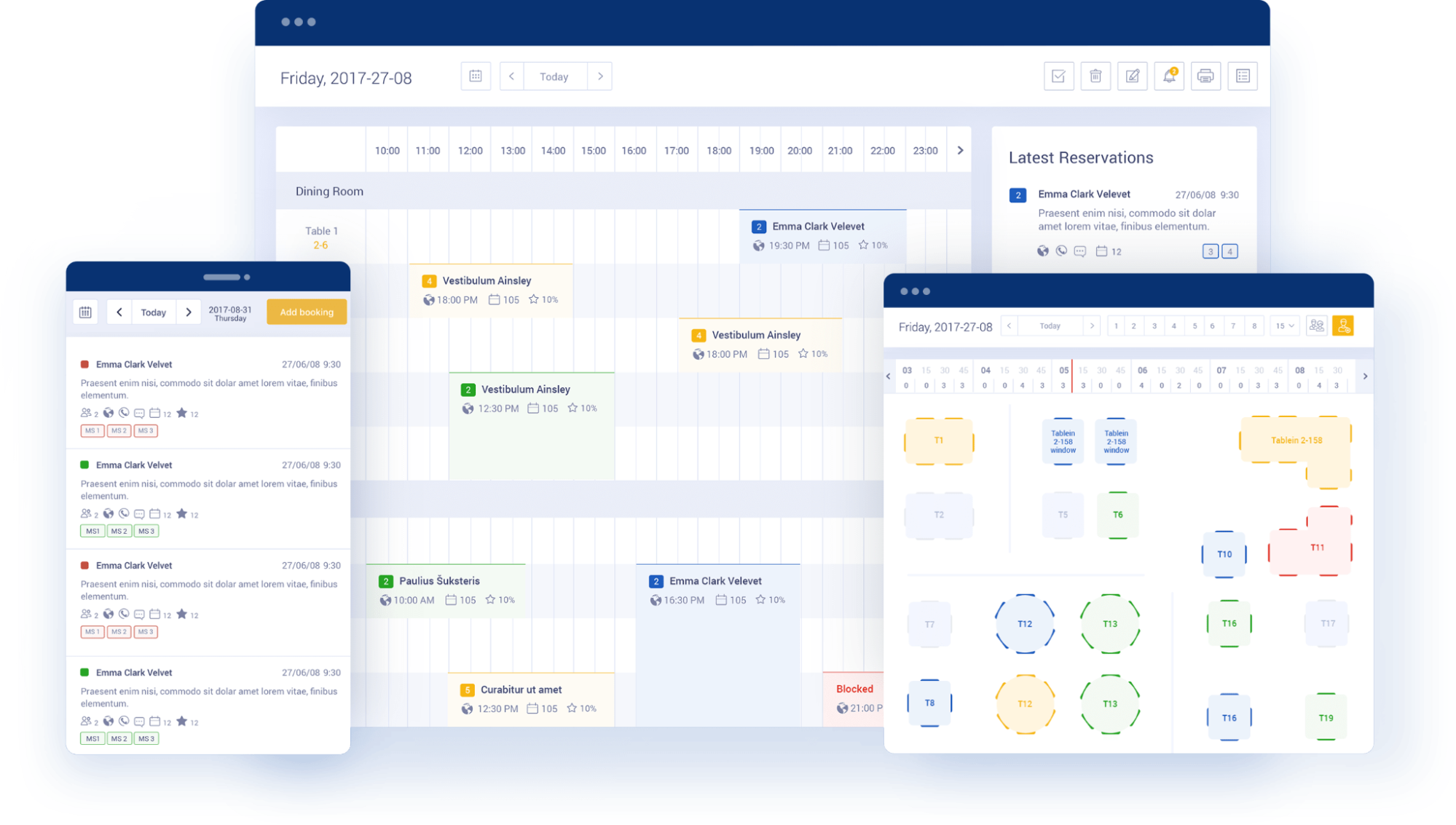
Source: Tablein
Do you see the value in this?
Since the system is automated, reservations can be accepted at any time, even when the restaurant is closed, or the staff is too busy to take a call.
That means no more missed bookings and a fuller dining area every evening.
Some of these tools also have mechanisms to prevent no-shows from endangering your revenue.
In Tablein’s case, for example, these include integrations with payment software, such as Stripe, which enables you to take deposits for reservations, and automated confirmation and reminder emails and text messages that notify the guest when they are supposed to show up.
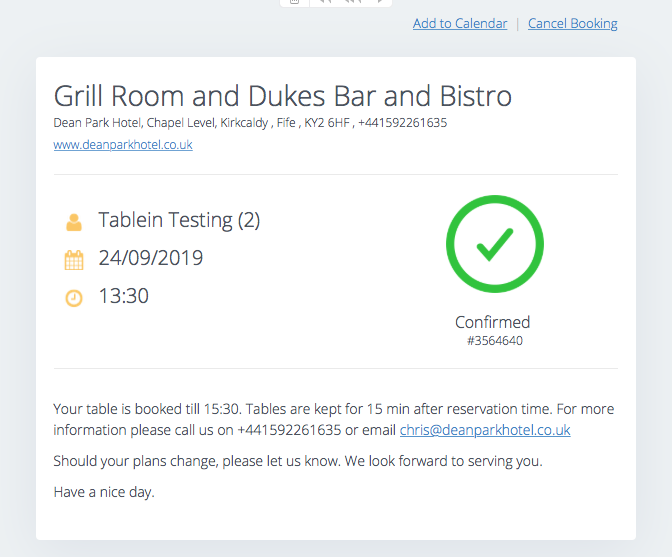
Source: Tablein
Both features make it more likely that a guest will appear for their booking, meaning you won’t be looking at empty tables during the dinner rush because a guest decided to bail on you.
Long story short, it’s tough to turn a profit as a restaurant owner these days.
However, if you take action to ensure your tables are full at all times, you won’t have to worry about making ends meet. An online table reservation system can help you do that.
Properly Managing Inventory
Restaurants are dynamic, fast-paced environments where the likelihood of wasting ingredients (whether by overuse or spoilage) is always high.
Also, accidents like spillages, burnt dishes, and equipment destruction are impossible to avoid completely.
All of this makes effective inventory management a daunting task and a huge challenge for restaurant owners.
Consider just one shocking statistic: $1 trillion worth of food is wasted globally every year in the food and beverages sector.
That means players in the hospitality industry are continually failing at inventory management practices.
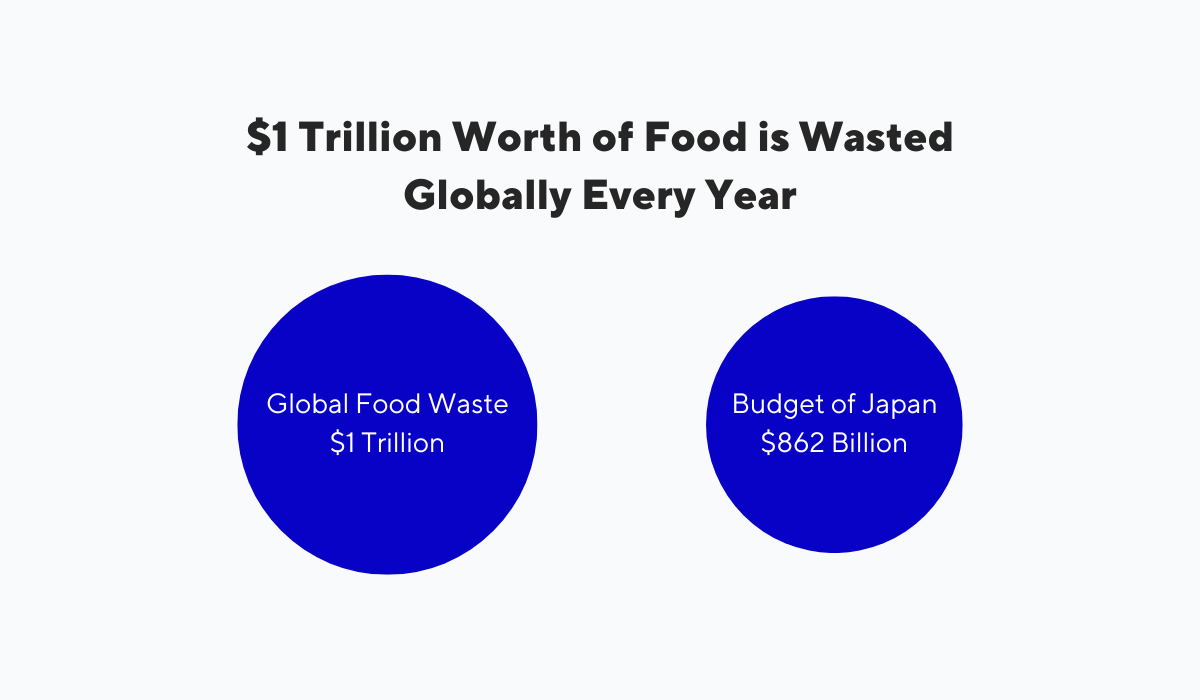
Illustration: Tablein / Data: Mosaic and The Print
A key issue here seems to be that many operators don’t understand that small interventions and preventive activities add up to form enormous savings.
So let’s review some of these inventory management practices to help you combat this issue.
First and foremost, you should ensure your inventory is stocked in the most efficient way possible.
That means stocking perishable items in the correct temperatures and dried goods in dry storage.
You can also apply the FIFO (First-In-First-Out) method of stocking new items in the back of the shelves, so that the items with a closer use-by date get used first.
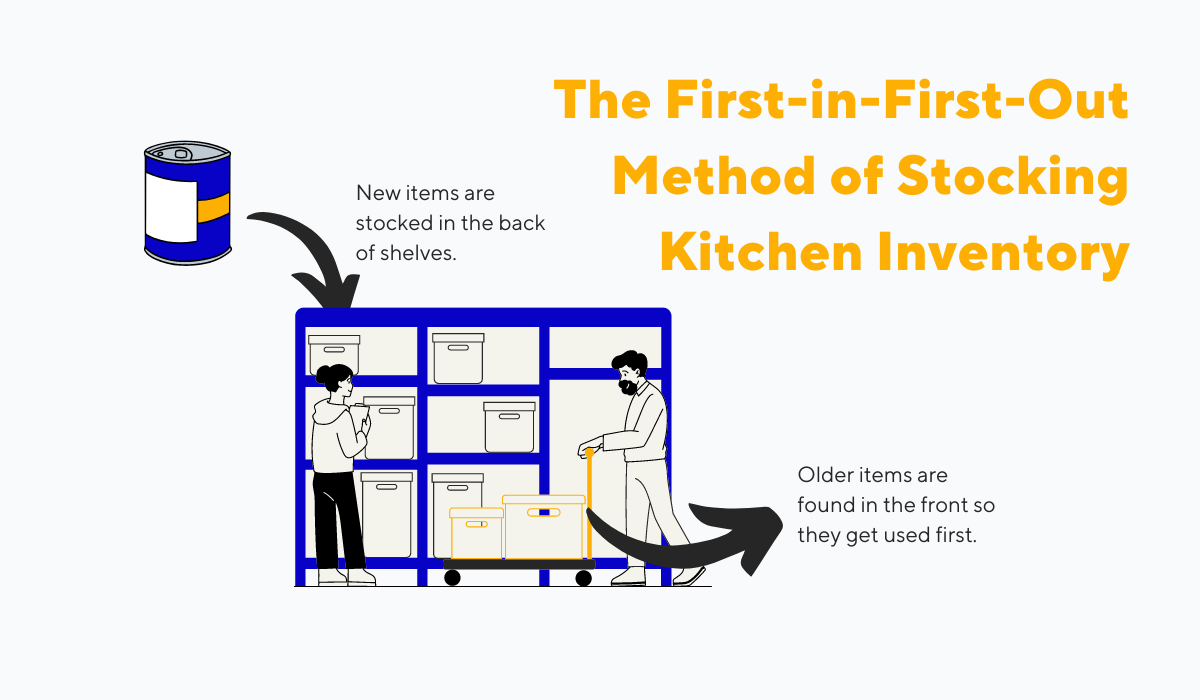
Source: Tablein
These techniques can help you prevent a lot of spoilage and the costs associated with it.
The way you order your stock also matters here. If you consistently order too little inventory, you will have to tell guests that certain menu items aren’t available.
That can endanger the quality of the dining experience you provide to them.
If you order too much, you’ll again face spoilage because you won’t be able to use up your stock.
A good way to handle this is to monitor how often menu items are ordered and then adapt your vendor orders to this rhythm.
You can do this by implementing a point-of-sale system (POS) that can connect your sales to your inventory.
For example, Oracle’s Symphony solution can monitor your sales and create forecasts for your inventory needs, so you’re sure to always be ordering on time and exactly in the amounts you need.
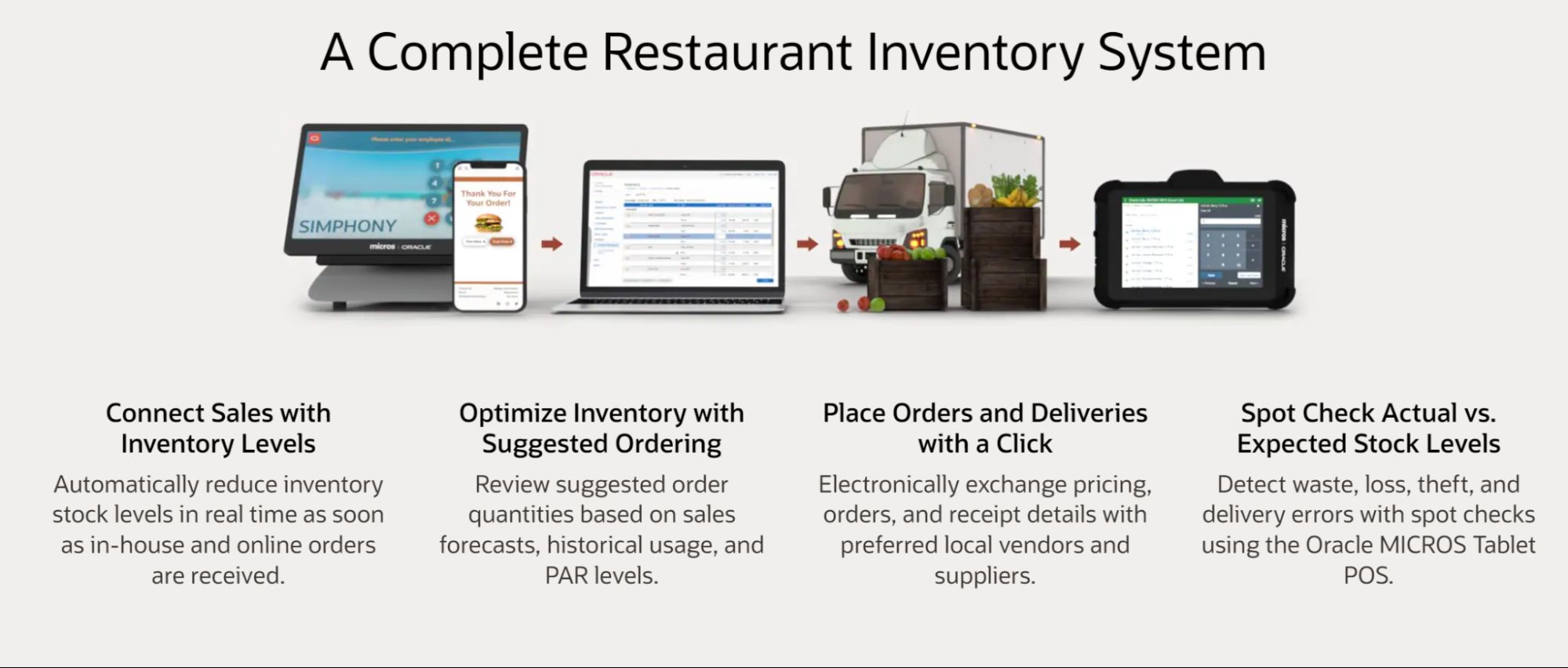
Source: Oracle
With a little help from technology, you can turn poor inventory management around and stop under- or over-ordering, so that your guests remain satisfied and your food waste stays low.
Yes, restaurants are chaotic places where keeping inventory is a challenge.
However, by implementing some good stocking practices and automating a part of the process, this challenge becomes a part of your success.
Adapting to Changing Market Trends
When your restaurant first opens its doors, you can enjoy the reputation of “the hottest place in town”, which allows you to effortlessly bring in foot traffic and generate stellar reviews without moving a muscle.
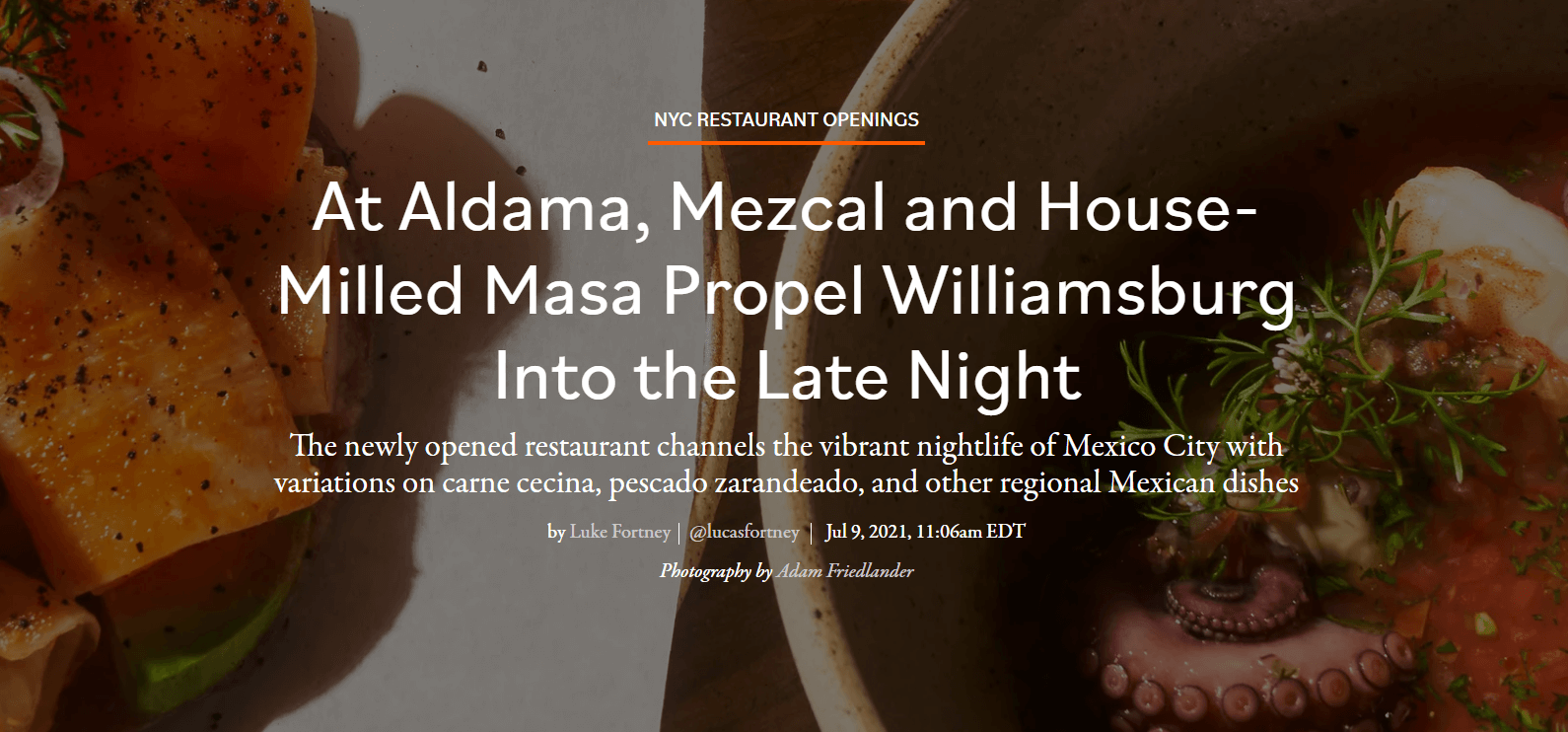
Source: Eater
But this kind of fame doesn’t last long, and the next hot thing is always brewing somewhere close by.
In big urban centers, this switch happens in a flash. For example, did you know that in New York City alone, as many as 700 new restaurants can open every two months?
With competition this tough, it’s no wonder that restaurateurs need to fight to stay relevant and keep their spot on the gastro-map of their city.
There’s a lot that owners can do to stay with the times and thus keep their audiences interested.
Following interior design trends is a good example. Restaurant patrons expect more than just a good meal.
They want to be impressed with your location and give an air of elegance to their evening.
That’s why it’s a good idea to give your interior a touch-up every couple of years.
For instance, have a look at how London’s Club Gascon, a French-inspired, Michelin-starred restaurant, freshened up its location after its visitors started to comment that the ambiance is a little “too ’90s.”
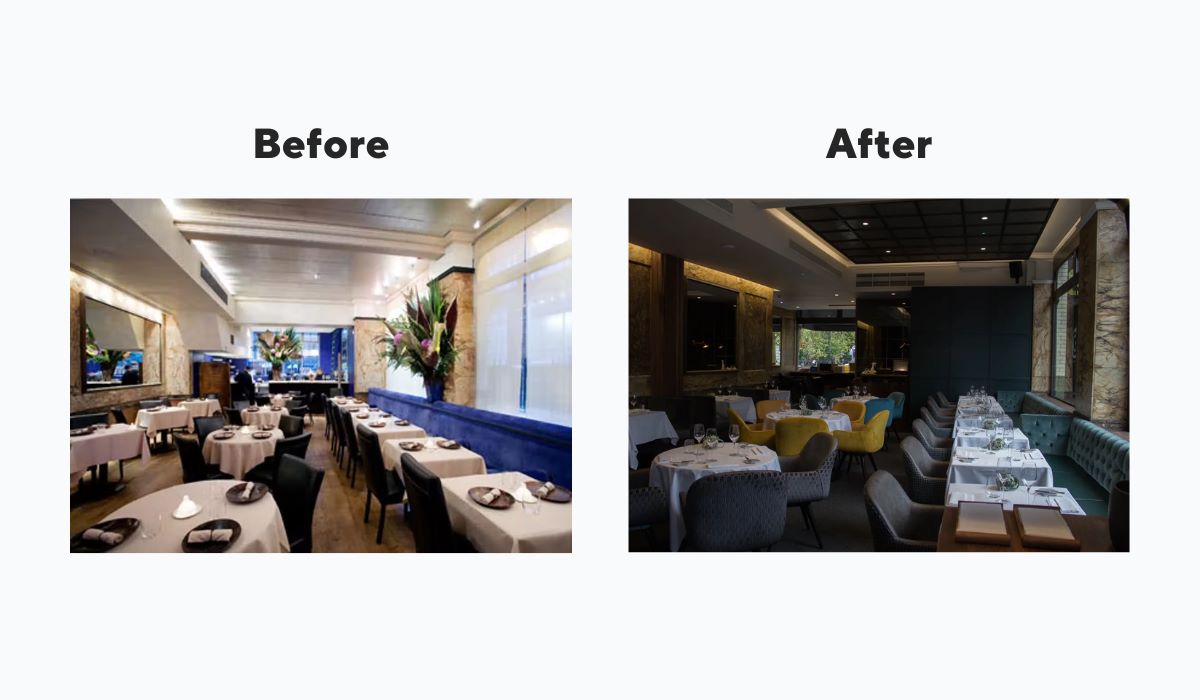
The menu is equally important. A big trend to consider in that regard is going plant-based.
Some of the world’s best restaurants are currently reconsidering their menus as they’re becoming increasingly conscious of how detrimental animal farming is to the environment.
Eleven Madison Park of New York, a restaurant famous for its meat and seafood-based dishes, for instance, recently switched to a fully meatless menu.
According to chef Daniel Humm, they made this decision because: “The current food system is simply not sustainable, in so many ways.”
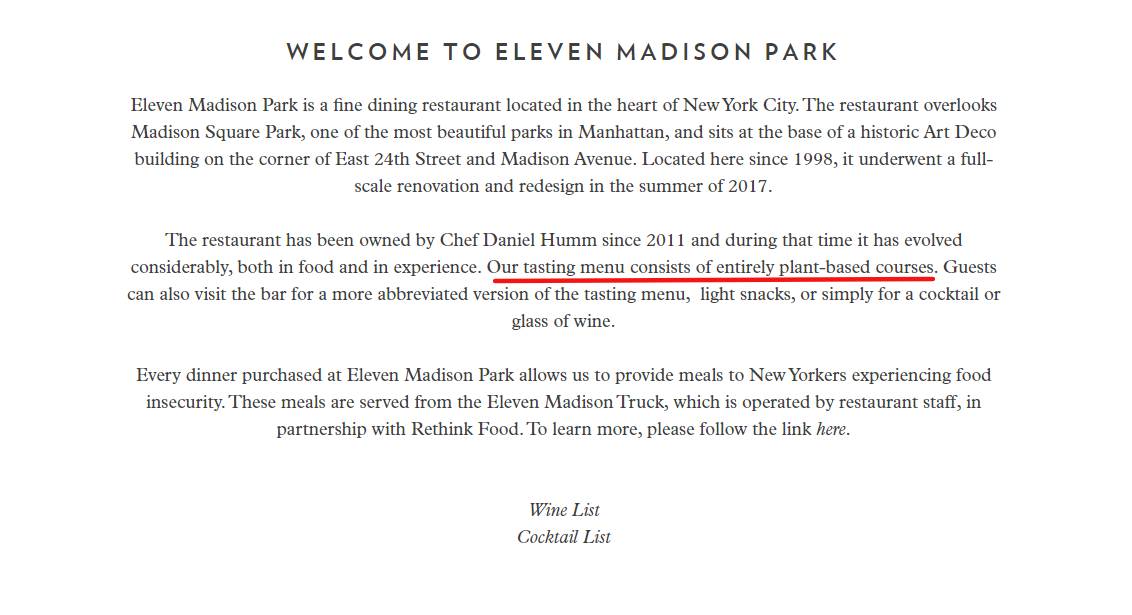
Source: Eleven Madison Park
Both of these examples come from top-tier restaurants that are aware of the fact that audiences are fickle and cannot be expected to remain loyal as a restaurant’s offer gradually becomes stale.
Take a page from their book and adapt to changing market trends to stay relevant and dear to your guests’ hearts.
Ensuring a Consistent Customer Experience
Restaurants face a unique challenge when serving their guests: providing a consistent experience.
After all, you’re not manufacturing products in a factory, you’re creating meals from scratch and interacting with customers.
That means that there are a lot of variables at play that can alter the experience and cause you to accidentally chase your patron away.
Here are a few factors that can change a guest’s perception of your restaurant:
- A couple of rude or inattentive servers operating under your radar, endangering the quality of your service
- Fluctuating quality of the ingredients altering the flavor of the guests’ favorite dishes
- Food arriving cold to the table because of a communication breakdown between the service and the kitchen staff
- Negligent kitchen staff that doesn’t follow recipes to the letter, resulting in different-sized portions of the same dish
All of these problems are, of course, mendable, but only if you and your managers keep your ear to the ground and act when you catch wind of variance in your service, food quality, employee morale, and other factors.
There are two essential ways you can do that. The first one is in person.
As we said before, it’s important to hold staff meetings to stay on top of what your staff needs to do their jobs, as well as to provide motivation and conflict resolution.
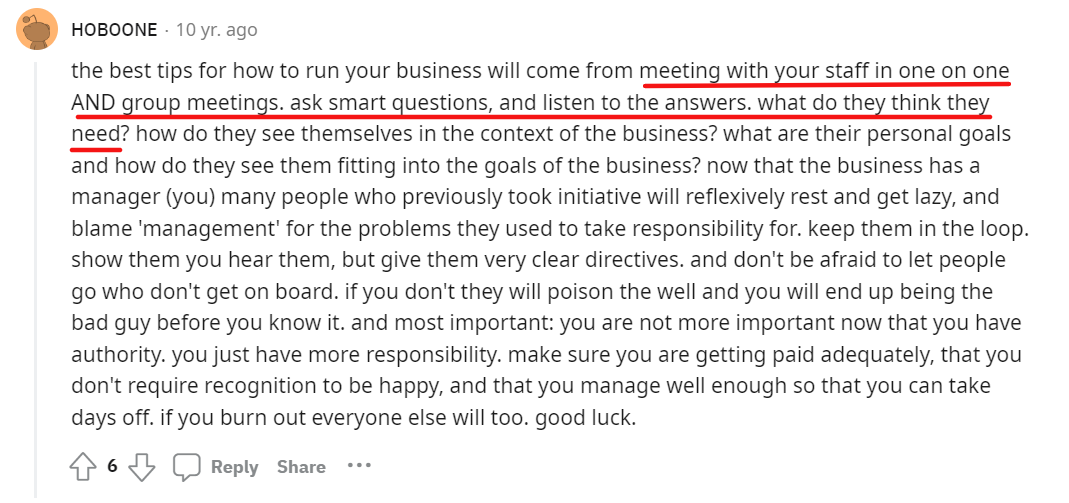
Source: Reddit
Also, it’s a good idea for you, as the owner, and your managers to approach tables from time to time to solicit feedback from guests to see if everything is in order.
Not only will this provide you with actionable data, but it will also make your guests feel appreciated and heard.
The other method involves tracking performance indicators to find areas where your restaurant has been slipping and working to improve them.
An excellent source of this kind of data are your online reviews.
You can monitor your social media, your Google Business Profile, and resources such as Yelp and Tripadvisor to get honest, unfiltered commentary on your dining experience.
For instance, look at how just one review can indicate that customer experience is deteriorating and point to several problems that require your attention.
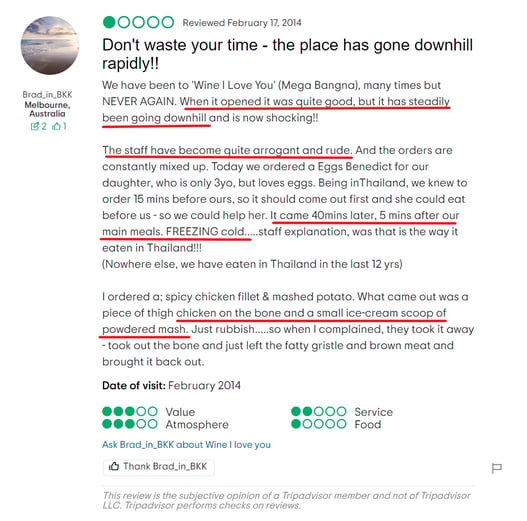
Source: TripAdvisor
Providing a consistent customer experience means constantly monitoring every aspect of your offer and service and acting as soon as variances emerge.
To do that, remember to communicate with your staff and guests often and track performance indicators, such as your reviews, to find problems you can fix.
Conclusion
Challenges in restaurant management come from all angles: staffing, revenue, inventory, market trends, and customer experience.
Combating them and keeping the business running has become increasingly difficult in these difficult economic times, but not impossible.
Start following some tried-and-true expert practices, enlist the help of technology, and be vigilant so you can catch problems early on and deal with them before they become unmanageable.
Get a 30-day Exclusive Trial
As a Tablein blog reader, you’re eligible for an exclusive 30-day free trial to experience our simple reservation solution for your restaurant.
Enter your business email, and we’ll send you all the steps needed to create your account.
Share this
You may also like

6 Challenges That Come with Restaurant Expansion

6 Restaurant Reservation Challenges and How to Overcome Them
